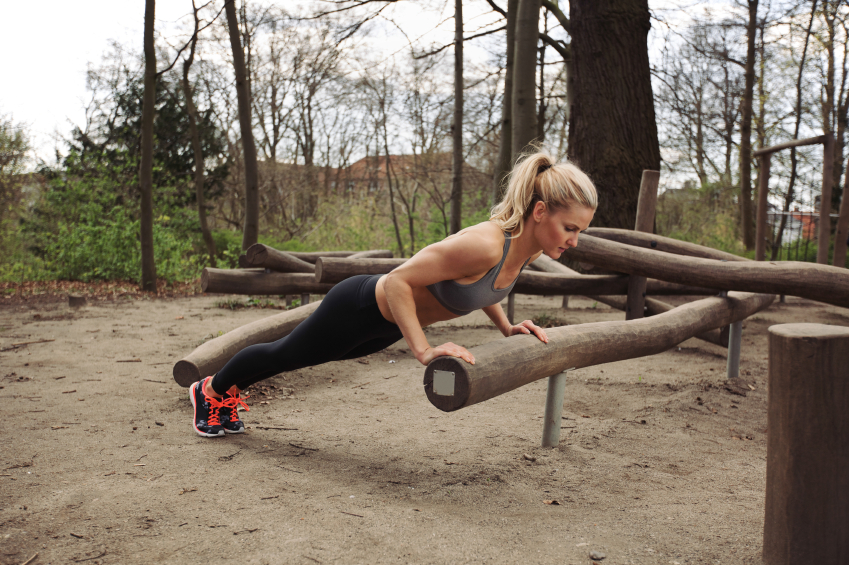Below is a sample twelve week speed training plan:
| Week | Day One | Day Two | Day Three |
| 1 | 5x400mx70% | 5x200mx80% | 5x800mx50% |
| 2 | 5x400mx75% | 5x200mx80% | 5x800mx50% |
| 3 | 5x300mx75% | 5x150mx85% | 4x600mx60% |
| 4 | 5x300mx75% | 5x150mx85% | 4x600mx60% |
| 5 | 4x200mx80% | 4x100mx90% | 4x600mx60% |
| 6 | 4x200mx80% | 4x100mx90% | 3x500mx70% |
| 7 | 3x150mx85% | 3x75mx95% | 3x500mx70% |
| 8 | 3x150mx85% | 3x75mx95% | 3x500mx70% |
| 9 | 3x100mx90% | 3x50mx100% | 2x400mx80% |
| 10 | 3x100mx90% | 3x50mx100% | 2x400mx80% |
| 11 | 3x75mx90% | 3x40mx100% | 2x400mx80% |
| 12 | 3x75mx90% | 3x40mx100% | 2x400mx80% |
The table shows a training program that you might have seen 30 years ago in the strength and conditioning literature. Essentially this applies weight training theory to speed training. The training is organized around a “heavy” day (day two), a “moderate” day (day one), and a “light” day (day three). The idea being that as the intensity is increased, the volume decreases. The training starts off focused around foundational endurance and proceeds to short distance speed. Just like with the weights, the training starts off at a lower intensity, gets the athlete a chance to get adjusted gradually, and slowly increases in intensity until the athlete is peaking towards the end of the program.
There’s a reason that this kind of speed training program isn’t seen in the literature anymore, put simply it doesn’t work. Running fast is a skill, it has to be practiced in order to improve at it. This means that when we have our athletes run at less than maximal speed, we’re improving their ability to run at less than maximal speed but we may not be improving how quickly they can run. This is true regardless of the distance of the sprint, 10 meters or 400.
Philosophically, track and field coaches approaches the sprints in one of two extreme ways. Some begin with a lot of speed endurance work. This builds the athlete’s fitness base, conditions the athlete’s body, and (in theory) provides a foundation for more advanced, shorter, more intense work. The other extreme focuses on shorter, more intense sprints. This is seen most obviously in the training of 400 meter runners, which is a funny race to train for because it requires everything. Some coaches focus on running miles and lots of longer speed endurance work (essentially it is a fast endurance event). Others focus on it as a pure sprint and rarely do more than 250-300 meters in training. Both approaches work, it depends on the athlete and the philosophy of the coach/program.
Now, the speed training for non-track and field athletes has some similarities, but also has some important differences to the training that a track and field athlete would use:
- First, speed endurance isn’t important, but conditioning is. Let me explain this. A sprinter has to be able to maintain their velocity for long distances. This does not happen in field sports, even in soccer. There are abrupt starts, stops, and changes of direction. The difference is that the non-sprinter will be asked to summon bursts of speed repeatedly throughout a game with minimal rest, this is a different quality than speed endurance and must be trained differently. This is where conditioning comes in; repeated sprints, circuit training, etc.
- Second, while ideal sprinting mechanics are similar to what is seen on the track, it’s more complicated because they have to be folded in with the ball, opponents, and abrupt stops/changes of direction.
- Finally, because sprinting is not the sport of most non-track athletes, they are even more likely to be prone to injuries like shin splints and hamstring pulls as a result of sprinting.
How do we apply the above practically? Here are some guidelines, followed by a sample program:
- After warming up, sprinting should be done at 100%.
- Sprinting distances should vary in training, just like in sports. Having said that, training should still focus on acceleration or maximum velocity (i.e. under 20 meters in length or 40+ meters in length).
- Metabolic conditioning workouts should be incorporated to develop the endurance for the athlete to last the entire game.
- Sport-specific agility work, reinforcing correct sprinting mechanics, need to be employed as part of training. It makes the training relevant to the athlete and lets them see how it applies.
- After the skills are mastered, incorporate the ball!
Below is a sample program for a basketball player.
| Week | Day One | Day Two | Day Three |
| 1 | Mobility exercises, 10-15 minutesSprinting technique drills, 10-15 minutes3-5×10 meters
Start/stop/start drill, 3-5x |
Mobility exercises, 10-15 minutesSprinting technique drills, 10-15 minutes3-5×40 meters
T drill, 3-5x
|
Mobility exercises, 10-15 minutesCircuit #1 |
| 2 | Mobility exercises, 10-15 minutesSprinting technique drills, 10-15 minutes3-5×10 meters
Start/stop/start drill, 3-5x |
Mobility exercises, 10-15 minutesSprinting technique drills, 10-15 minutes3-5×40 meters
T drill, 3-5x
|
Mobility exercises, 10-15 minutesCircuit #2 |
| 3 | Mobility exercises, 10-15 minutesSprinting technique drills, 10-15 minutesStick drills, 3-5x
3-5×10 meters Start/stop/start drill, 3-5x |
Mobility exercises, 10-15 minutesSprinting technique drills, 10-15 minutesStride length drills, 3-5×40 meters
3-5×40 meters T drill, 3-5x
|
Mobility exercises, 10-15 minutesCircuit #3 |
| 4 | Mobility exercises, 10-15 minutesSprinting technique drills, 10-15 minutesStick drills, 3-5x
3-5×10 meters Start/stop/start drill, 3-5x |
Mobility exercises, 10-15 minutesSprinting technique drills, 10-15 minutesStride length drills, 3-5×40 meters
3-5×40 meters T drill, 3-5x
|
Mobility exercises, 10-15 minutesCircuit #1 |
| 5 | Mobility exercises, 10-15 minutesSprinting technique drills, 10-15 minutesStick drills, 3-5x
3-5×10 meters Resisted starts, 3×5 meters Start/stop/start drill, 3-5x while dribbling ball |
Mobility exercises, 10-15 minutesSprinting technique drills, 10-15 minutesStride length drills, 3-5×40 meters
3-5×40 meters while dribbling ball T drill, 3-5x while dribbling ball
|
Mobility exercises, 10-15 minutesCircuit #2 |
| 6 | Mobility exercises, 10-15 minutesSprinting technique drills, 10-15 minutesStick drills, 3-5x
3-5×10 meters Resisted starts, 3×5 meters Start/stop/start drill, 3-5x while dribbling ball |
Mobility exercises, 10-15 minutesSprinting technique drills, 10-15 minutesStride length drills, 3-5×40 meters
3-5×40 meters while dribbling ball T drill, 3-5x while dribbling ball
|
Mobility exercises, 10-15 minutesCircuit #3 |
Circuit #1 (bodyweight exercises):
Perform each bodyweight exercise for 30 seconds then sprint the desired distance. Rest 3-5 minutes at the end of the circuit, then repeat.
Jumping jacks
Sprint 10 meters
Squat/thrusts
Sprint 10 meters
Squats
Sprint 10 meters
Lunges, 10 meters
Sprint 10 meters
Inchworms 10 meters
Sprint 10 meters
Bear crawls 10 meters
Sprint 10 meters
Push-ups
Sprint 10 meters
Crunches
Circuit #2 (implements):
Perform each exercise for 30 seconds. Rest 3-5 minutes at the end of the circuit, then repeat.
Kettlebell swings
Two handed rope slams
Suspension rows
One-hand kettlebell wings (right)
One-hand rope slams (right)
Suspension chest press
One-handed kettlebell swings (left)
One-handed rope slams (left)
Suspension reverse flies
Kettlebell cleans (alternate)
Rope jumping jacks
Suspension reverse lunges
Kettlebell snatches (alternate)
Rope circles
Suspension hamstring curls
Circuit #3 (sprints):
This works on time, the number in parenthesis after the distance represents a goal time in seconds. The idea is that the clock starts when the athlete is told to “go.” The athlete has the goal time from the “go” command until the next “go” command. For example: The athlete has 30 seconds to complete a 100 meter sprint. After 30 seconds, the second sprint will start. So if the athlete finished the sprint in 15 second, they have 15 seconds to rest. As you can see, this approach rewards speed and effort.
20 meters (10)
40 meters (20)
60 meters (30)
100 meters (30)
100 meters (30)
200 meters (60)
200 meters (60)
100 meters (30)
60 meters (30)
40 meters (20)
20 meters (10)



